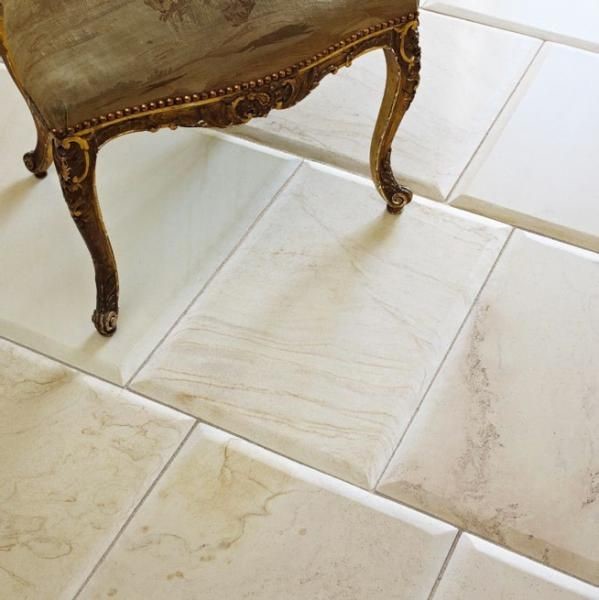Natural Stone Tiles
Contents |
Introduction
Natural stone tiles have been used for interior design purposes for a very long time, and used to be the material of choice for castles, towers, and other ancient structures. These tiles remain popular today due to their ability to withstand wear and tear while retaining their aesthetics.
Natural stone can be found in many households across the world and offers a distinctive feel, as each tile is unique, and can be sustainable.
Types of natural stone tiles
There are a wealth of different types of natural stone tiles to choose from for both commercial and residential properties, all of which provide different aesthetics. The ability to choose from such a vast selection allows homeowners, contractors, architects and interior designers to create great aesthetics and style.
Natural stone options include:
- Marble.
- Serpentine marble.
- Granite.
- Limestone.
- Travertine.
- Slate.
- Sandstone.
- Onyx.
- Shell stone.
- Quartz.
Benefits of natural stone tiles
There are many benefits to natural stone tiles, a fact that has contributed to their popularity, including:
- Durability – natural stone is sturdy and lasts for a very long time.
- Radiant heating – one of the benefits of natural stone is how it conducts heat, meaning that underfloor heating systems can become more efficient with this type of floor.
- Uniqueness – because natural stone forms from nature, it has unique colours and patterns that make each tile a one-of-a-kind.
- Hygiene – natural stone creates surfaces that do not hold dust, hair or skin, meaning it is suitable for many applications where hygiene is required or preferred.
- Low maintenance – these types of tile do not need much in terms of maintenance, as a simple soft brush or mop can easily keep them clean.
Absorption rating
This concept refers to the degree to which a material is porous, with the more absorbent being more susceptible to staining and cracking damage. This rating is divided into different categories that allow you to differentiate between them:
- Non-vitreous – has the highest absorption levels and should not be installed in damp environments. Sandstone is, perhaps, the most porous of the natural stones.
- Semi-vitreous – while not as porous as non-vitreous tiles, they will still require maintenance the more they’re exposed to liquids. An example is slate.
- Vitreous – this category refers to natural stone tiles that can be used for many low to mid traffic applications, as they are not as porous, such as travertine and limestone.
- Impervious – natural stone that is impervious to liquids will be easy to maintain and is typically chosen for high-traffic commercial uses, like granite, which is relatively waterproof.
Uses of natural stone tiles
Natural stone tiles can be found in a variety of commercial and residential properties and applications, mainly in kitchens, bathrooms, conservatories, and hallways. They can be installed on many different surfaces, such as walls, floors and splashbacks, making them ideal for many spaces.
--Roccia 10:15, 22 Sep 2017 (BST)
Related articles on Designing Buildings Wiki
Featured articles and news
The UK's Modern Industrial Strategy: A 10 year plan
Previous consultation criticism, current key elements and general support with some persisting reservations.
Building Safety Regulator reforms
New roles, new staff and a new fast track service pave the way for a single construction regulator.
Architectural Technologist CPDs and Communications
CIAT CPD… and how you can do it!
Cooling centres and cool spaces
Managing extreme heat in cities by directing the public to places for heat stress relief and water sources.
Winter gardens: A brief history and warm variations
Extending the season with glass in different forms and terms.
Restoring Great Yarmouth's Winter Gardens
Transforming one of the least sustainable constructions imaginable.
Construction Skills Mission Board launch sector drive
Newly formed government and industry collaboration set strategy for recruiting an additional 100,000 construction workers a year.
New Architects Code comes into effect in September 2025
ARB Architects Code of Conduct and Practice available with ongoing consultation regarding guidance.
Welsh Skills Body (Medr) launches ambitious plan
The new skills body brings together funding and regulation of tertiary education and research for the devolved nation.
Paul Gandy FCIOB announced as next CIOB President
Former Tilbury Douglas CEO takes helm.
UK Infrastructure: A 10 Year Strategy. In brief with reactions
With the National Infrastructure and Service Transformation Authority (NISTA).
Ebenezer Howard: inventor of the garden city. Book review.
The Grenfell Tower fire, eight years on
A time to pause and reflect as Dubai tower block fire reported just before anniversary.
Airtightness Topic Guide BSRIA TG 27/2025
Explaining the basics of airtightness, what it is, why it's important, when it's required and how it's carried out.
Construction contract awards hit lowest point of 2025
Plummeting for second consecutive month, intensifying concerns for housing and infrastructure goals.
Understanding Mental Health in the Built Environment 2025
Examining the state of mental health in construction, shedding light on levels of stress, anxiety and depression.
The benefits of engaging with insulation manufacturers
When considering ground floor constructions.
Lighting Industry endorses Blueprint for Electrification
The Lighting Industry Association fully supports the ECA Blueprint as a timely, urgent call to action.


























Comments